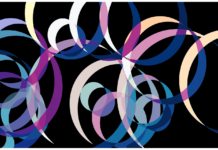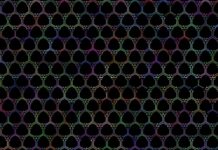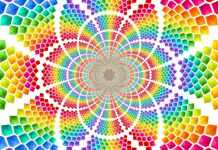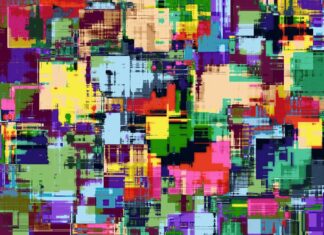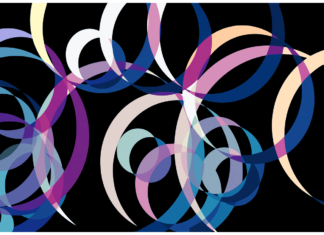Scalp Scrub has gained popularity as a beneficial hair care treatment that focuses on exfoliating the scalp. It helps remove product buildup, dead skin cells, and excess oil, promoting a healthier scalp environment. By cleansing and detoxifying the scalp, a scalp scrub can enhance hair growth, improve overall hair health, and provide a relaxing experience. In this comprehensive guide, we will explore everything you need to know about scalp scrubs, from their benefits and ingredients to the proper application techniques and potential side effects.
Scalp Scrub, Scalp Scrub, Scalp Scrub – these words encompass a simple yet powerful hair care practice that has revolutionized the way we care for our scalps. Scalp scrubs are specifically formulated products designed to cleanse and exfoliate the scalp, much like a facial scrub works for the skin. By incorporating a scalp scrub into your hair care routine, you can effectively remove impurities, unclog hair follicles, and enhance overall scalp health. The importance of a healthy scalp cannot be overstated, as it forms the foundation for strong, vibrant, and beautiful hair.
Now, let’s delve into the five important things you should know about scalp scrubs:
1. Benefits of Scalp Scrubs:
Scalp scrubs offer a multitude of benefits for both the scalp and hair. Firstly, they help remove product buildup, dead skin cells, and excess oil that can accumulate on the scalp, leading to a dull, congested scalp environment. By unclogging hair follicles, a scalp scrub promotes better hair growth and can even prevent issues like hair thinning and hair loss. Additionally, the exfoliating action stimulates blood circulation in the scalp, providing essential nutrients to the hair follicles and encouraging healthier, stronger hair. Moreover, a clean and balanced scalp is less prone to dandruff, itchiness, and other scalp conditions, promoting overall scalp comfort and well-being.
2. Ingredients in Scalp Scrubs:
Scalp scrubs often contain a combination of exfoliating agents, nourishing ingredients, and botanical extracts. Common exfoliating agents include granules like sugar, salt, or natural beads that help physically remove impurities and dead skin cells. Chemical exfoliants like alpha hydroxy acids (AHAs) or beta hydroxy acids (BHAs) can also be present to enhance the exfoliation process. Nourishing ingredients like oils, vitamins, and antioxidants help replenish and moisturize the scalp after exfoliation, preventing dryness and irritation. Additionally, botanical extracts such as tea tree oil, lavender, or aloe vera are often included for their soothing and antimicrobial properties, which can further benefit the scalp.
3. Proper Application Techniques:
To maximize the benefits of a scalp scrub, it is important to follow proper application techniques. Start by wetting your hair and scalp thoroughly. Take a sufficient amount of the scalp scrub and gently massage it onto your scalp using circular motions. Pay attention to areas that require extra exfoliation, such as the hairline, nape of the neck, or areas prone to oiliness. Continue massaging for a few minutes to ensure thorough exfoliation. Rinse your scalp and hair thoroughly, making sure to remove all traces of the scrub. Follow up with your regular shampoo and conditioner to cleanse and nourish your hair strands. It is recommended to use a scalp scrub once or twice a week, depending on your scalp’s needs.
4. Potential Side Effects:
While scalp scrubs are generally safe for most individuals, it is essential to be aware of potential side effects. Over-exfoliation or excessive scrubbing can irritate the scalp and cause redness, dryness, or even small abrasions. It is important to be gentle during the scrubbing process and avoid excessive pressure. If you have a sensitive scalp or any existing scalp conditions like psoriasis or eczema, it’s advisable to consult with a dermatologist before incorporating a scalp scrub into your routine. Additionally, some individuals may be allergic or sensitive to certain ingredients present in the scrub, so it’s recommended to perform a patch test before using the product on your entire scalp. If you experience any adverse reactions such as itching, burning, or swelling, discontinue use immediately and seek medical advice.
5. Choosing the Right Scalp Scrub:
When selecting a scalp scrub, it’s important to consider your specific hair and scalp needs. Look for a scrub that suits your hair type, whether it’s dry, oily, or normal. If you have a sensitive scalp, opt for a gentle scrub that contains mild exfoliants and soothing ingredients. Pay attention to the ingredient list and avoid scrubs that contain harsh chemicals or potential irritants. It can also be beneficial to choose a scrub that complements your other hair care products and aligns with your overall hair care routine. Additionally, reading reviews and seeking recommendations from trusted sources can help you make an informed decision.
Scalp Scrub has emerged as a valuable addition to our hair care routines, offering a range of benefits for the scalp and hair. By incorporating a scalp scrub into your regular regimen, you can effectively remove impurities, stimulate blood circulation, and promote a healthy scalp environment. Remember to choose a scrub that suits your specific needs, follow proper application techniques, and be mindful of potential side effects. With consistent and proper use, a scalp scrub can contribute to the overall health and vitality of your hair. So, embrace the power of Scalp Scrub and give your scalp the care it deserves.
6. Scalp Massage Benefits:
When applying a scalp scrub, incorporating a scalp massage into the process can enhance the overall experience and benefits. Scalp massages stimulate the blood circulation in the scalp, which promotes the delivery of essential nutrients to the hair follicles. This increased blood flow can also help relax the scalp muscles, relieve tension, and reduce stress. By combining a scalp massage with a scalp scrub, you can amplify the effects of exfoliation and create a soothing and invigorating experience for your scalp.
7. DIY Scalp Scrubs:
While there are many commercially available scalp scrubs on the market, you can also create your own DIY versions using natural ingredients. DIY scalp scrubs allow you to have full control over the ingredients and tailor the scrub to your specific needs. Some common DIY scalp scrub ingredients include brown sugar, sea salt, oatmeal, coconut oil, essential oils, and aloe vera gel. However, it’s important to research and ensure that the ingredients you choose are suitable for your scalp and hair type. DIY scalp scrubs can be a cost-effective and customizable option for those who prefer a more natural approach to hair care.
8. Scalp Scrubs for Different Hair Concerns:
Scalp scrubs can be particularly beneficial for addressing specific hair concerns. For individuals with oily scalps, using a scrub containing clarifying ingredients like tea tree oil or salicylic acid can help remove excess oil and prevent greasiness. If you have a dry or flaky scalp, look for scrubs with moisturizing ingredients such as jojoba oil, shea butter, or glycerin to hydrate and soothe the scalp. Those dealing with dandruff or scalp conditions may benefit from scrubs containing anti-fungal agents like ketoconazole or natural remedies like apple cider vinegar. Understanding your hair concerns can help you choose a scalp scrub that targets and alleviates those specific issues.
9. Post-Scalp Scrub Care:
After using a scalp scrub, it’s important to follow up with appropriate post-care to maintain a healthy scalp. Rinse your scalp thoroughly to ensure all scrub residues are removed. Follow with a gentle shampoo and conditioner that suits your hair type and scalp condition. It’s advisable to choose sulfate-free and moisturizing products to avoid stripping the scalp of its natural oils. Additionally, avoid using any styling products immediately after a scalp scrub to allow your scalp to breathe and fully benefit from the cleansing and exfoliating process.
10. Integration with Hair Care Routine:
Incorporating a scalp scrub into your regular hair care routine can provide long-term benefits for scalp and hair health. While a scalp scrub can effectively remove buildup and impurities, it’s important to maintain a consistent routine to prevent them from accumulating again. Depending on your scalp’s needs and the product you choose, using a scalp scrub once or twice a week is generally recommended. However, it’s essential to listen to your scalp and adjust the frequency as needed. Monitor how your scalp and hair respond to the scrub, and make adjustments accordingly.
In summary, scalp scrubs are a valuable tool for maintaining a healthy scalp and promoting optimal hair growth. The benefits of scalp scrubs include removing buildup, unclogging hair follicles, stimulating blood circulation, and addressing specific hair concerns. Whether you opt for a commercially available scalp scrub or a DIY version, proper application techniques and post-care are essential. By integrating scalp scrubs into your regular hair care routine, you can enjoy a clean, balanced scalp and healthier, more vibrant hair.




